It was Burnout Paradise’s destiny to go big on DLC. The game thrives on this feeling that you’re in an expansive world of limitless activities to perform, but without its side tasks feeling like the arbitrary padding of so many other open-world games. Paradise’s downloadable extras try to continue this trend by providing an exceptional volume of new content to dive into. Although Big Surf Island is probably the most memorable of the DLCs, it’s the free 2008 “Davis Update” (better known as “Burnout Bikes”) which more people are likely to have played. While Big Surf Island takes the more traditional expansion pack approach of mainly adding more content to the game, Burnout Bikes wants to make old roads feel new by reusing concepts and areas from the vanilla game, but with a few changes, including a new type of vehicle.
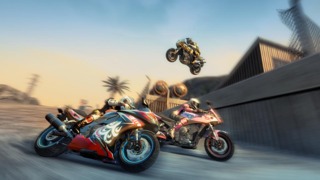
Burnout Paradise is the opposite of a simulation racer and Criterion could have chosen to treat their bikes as just differently shaped cars. Instead, they went to some lengths to introduce them as their own distinct type of automobile, worthy of their own unique gameplay rules. The premise behind the bikes is simple: In comparison to Paradise’s other vehicles they’re less about speed and more about control. You can see why a developer might want to give you the option to take more control in Paradise: The lack of it in the original game was often exciting, but also the cause of many of the game’s most frustrating moments. None the less, trying to remove speed from Burnout Paradise is a lot like removing the flight from a bird. That might sound harsh, but upfront I’ll say there are some positives to the bikes, even in unlikely areas of their design.
The boost mechanic of the original game was one of the prime culprits for players losing control of their vehicle and so Criterion leave it off of the bikes entirely. The bikes are also given a more powerful LT brake than the cars, which is a bit of a necessity when these emulated motorcycles, just like the real thing, don’t have an e-brake. The superior handling this affords occasionally backfires: It shows transparently that those moments in the vanilla game where you go flying past an important turn-off are typically to do with the game signalling them impossibly late, rather than a failure of your reaction times. None the less, this control opens up a small but new dimension to the game. As in most serious racers, there’s a sense of accomplishment to be found in letting off the accelerator and drip-feeding braking to your driving at the right moments to succeed. At the same time, not going so fast you’re constantly speeding into vehicles and walls is it’s own kind of relief. Even the lack of e-brake doesn’t feel like a particular restriction. While it is an important part of being able to tackle corners in the base game, it can also sabotage events by making you spin out or temporarily locking up your ability to reverse. Even crashing becomes its own kind of brake.
The bike resets so much faster after colliding with an object than the cars do, so if you’re cruising along at top speed and need to come to an abrupt halt or turn around, purposefully driving into vehicles or geometry often gives you a quicker, more controlled stop and reset than trying to pull the brake does. Cutting down the crash times is one of the best things this update does: It lets Paradise move with the virtually uninterrupted rhythm that the vanilla version hints it wants to, and when you think about it, there’s no reason Paradise couldn’t have done this all along. The base game’s more delayed resets are important during Races, Burning Routes, and Stunt Runs. They make sure drivers who make mistakes fall behind, while less accident-prone racers can get ahead. However, free-roaming, Road Rage, and Marked Man events don’t have anything to do with vehicles trying to get ahead of each other, so there’s little reason that a crash shouldn’t be resolved as fast as the game is capable of doing so.
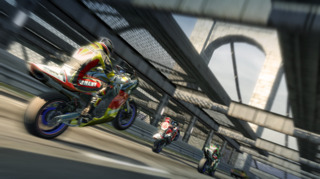
Surprisingly, Burnout Bikes even resets you immediately if you crash during Burning Routes, giving it a more laidback difficulty than the original content. It’s nice to have that option to play the base game events when you’re in more of a mood for a challenge and the Burnout Bikes events when you’re tired of all the game’s more punishing flaws and just want to drive. As an added bonus, none of the bikes move in that unwieldy, squirrely manner that some of the cars do. The moments where your vehicle doesn’t conform to the basic inputs you’re giving it have never been fun parts of Burnout and the game is better off without them. Now comes the bad.
The curse of the motorcycles, which Burnout Bikes can’t escape from, is that neither the core mechanics of the game nor the world the game is set in are built for them to be there. They’re a square peg that Criterion try to fit into a round hole, and upon finding they cannot jam one into the other, the developers begin hacking away at the features which make Paradise a worthwhile game. Let’s come back to the absence of the boost, because it’s the first thing that hits you about the DLC, and it hits you hard. Without that boost you no longer feel like you’re behind the experience’s biggest bursts of energy. It also robs the gameplay of one of its most fundamental risk-reward systems and gives you less motive to engage with the most intense and immediate sources of excitement.
The basic logic of the boost is that you can choose to sacrifice handling for acceleration. It’s a mildly strategic move, a test of your driving abilities, and a way to crank the game to eleven, and Bikes drains the game of a bit of all those things by not having it. Similarly, Bikes rarely gives a mechanical reason to drive into oncoming traffic, performs jumps, or “near miss” cars, while drifts, barrel rolls, e-brake turns, and flat spins are now literally impossible. These brilliantly irresponsible stunts are such a big part of vanilla Paradise that the game loses a lot by dropping them from its repertoire. But this is only the beginning. I mentioned in my write-up of the core game that Paradise City has as much longevity as it does partly because it lets you perform a wide range of events in the same space, but while Burnout Paradise has 5 different event types, Burnout Bikes has 1, and while Burnout Paradise has 120 events, Burnout Bikes has only 39. Being a smaller project, it makes sense that there are fewer events, but why the economising on event types? I have some theories.
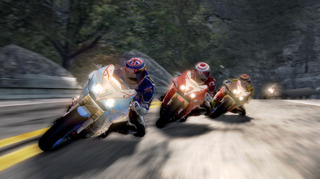
The most understandable exclusion is the Stunt Run event. In Stunt Runs e-brake turns, boosts, and drifts are little tricks that keep your combo while you’re moving between big tricks, and when the bikes can’t do those smaller tricks there’s no glue to hold the stunt event together. This event also has less to lean on when Burnout Bikes removes all the billboards from the game (we’ll loop back round to this), doesn’t let you barrel roll or flat spin, and doesn’t give you the boost to easily tackle jumps. It makes sense that Burnout Bikes can’t do Stunt Runs when it doesn’t have that many stunts to perform.
As for why there are no Marked Man or Road Rage events, it may have a surprisingly base answer: The surface area of the vehicles. It’s so much easier to hit a car with another car than it is to hit a bike with a bike. Aiming a slim vehicle at a slim target while moving at high speed requires a kind of accuracy that would be unreasonable, especially when missing a target can mean a crash. Additionally, without the boost, you can’t make quick, sharp shunts at your opponents, nor can you quickly dart out of the way of them. The missing Races are probably the hardest to explain, but again, boosts were a strong tool of recovery in this mode and helped separate out players, and the since-neutered takedowns were an important part of them too. Burnout Bikes culls so many of the mechanics on which the original events were built that the only one which can survive the chopping block is the Burning Route.
No matter what activity you’re performing however, one new element persists throughout all play: The day-night cycle. The introduction of this cycle represents a trade-off of aesthetic appropriateness for gameplay variety. Burnout Paradise is a very summery game. When you’re blazing down the roads with upbeat pop rock thrumming out of your speakers and you haven’t got that bright sunny skyline in front of you, the game feels tonally out of step with itself. However, the night does look different and there’s something distinctly cool about seeing the soft glow of taillights against the misty blue of a sleeping Paradise City. More importantly, the update keeps up its commitment to mechanical emulation here. It doesn’t want the day-night cycle to be skin deep, it wants to give you contrasting feelings of day and night within the context of driving in a city. The day provides more illumination but busier roads, while the night provides lower visibility but less traffic. Although, to some degree it’s a choice between whether you want to be more likely to hit cars or more likely to hit inanimate hazards.
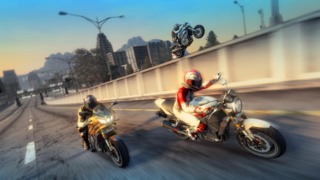
To both teach you about the mechanical difference between the two times and to better incorporate them into the gameplay, the events are not just based around the bikes, but also the day-night cycle. Half of Burnout Bikes’ Burning Routes can be completed in the first half of the in-game day, while half can be completed in the last half. Starting these Burning Routes is less of a chore than starting the ones in vanilla Paradise at least. In the base game you have to work out which routes you haven’t completed, work out where they are, work out whether you have the right vehicle for them, and then get that vehicle from a junkyard to the starting line. In Burnout Bikes any motorcycle can compete in any Burning Route and the starting lines are generally easier to pick out of the map. Still, you’ve got a system where events are fairly widely spread across the world and all of them are subject to in-game time. You either have to worry about how much time you have to start certain events before they will become unavailable for twelve virtual hours or muddle about with “Time of Day” options in the menus, and for a game that doesn’t want to just plaster your screen in GUI, this DLC sure does leave you checking maps and menus a lot.
Once you hit the final third of the content in this update, it’s easy to see why Criterion may have been reluctant to implement that “Retry Last Event” feature they eventually threw into the game. Events in Paradise typically take you long distances across the map, even if you don’t want to go long distances across the map. It’s easy to find situations where you want to stick near the starting line of an event because there’s plenty of other content you want to access nearby. What’s more, unfinished content tends to cluster particularly on the left side of the map, as its longer roads with fewer intersections make it less accessible, and its smaller quantity of events compared to the right side of the map make it less desirable to visit. But you’re in luck because there’s an exploit. If you finish an event and want to jump back to the area where you started it, you can simply hit “Retry Last Event”, then quit out of the event, and you’ve got your own makeshift teleportation system. This may be the only example in video games of emergent fast-travel. The “Retry” option adds brief load times to a game that has worked so hard to remove them, and again, my article on the main game explains why Paradise is in many ways better off without fast-travel, but I can’t argue against its importance when the game is structured the way it is. The only snag is sometimes it will glitch so that the menu that the “Retry” option is on doesn’t function at all.
When the bikes operate so differently to the cars, their influence on the game world was never going to be limited to just the main content either. Those 570 collectibles from the base game vanish from the city the second you get on a bike; there are no billboards, gates, or stunt jumps. I can only think that this is the result of the designers thinking the bikes would make it too unchallenging to collect these extras. Their reduced width makes them easier to line up with ramps and their superior handling could affect the ease with which you tackle much of this content. Still, if the update can give bikes exclusive, easier Burning Routes, I don’t see why it can’t just leave the collectibles in, and separately track which of them you’ve collected with the bikes and which of them you’ve collected with the cars.
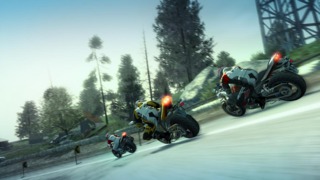
The update does do something smart however in realising that with side content being such a central part of Burnout Paradise, any update to the game needs to make sure its new mechanics affect how you interact with that side content, not just the main stuff. So, the additional content in Burnout Bikes comes in the form of being able to set separate times on roads in the day and in the night. Again, like the day and night Burning Routes, it helps emphasise the difference between the two world states and the knowledge you gain from it can be applied back into playing the game with regular cars.
None the less, if you were only going to carry one side activity over from the main game to Burnout Bikes, the road times are one of the worst ones you could have picked. That’s not because setting times on roads is boring, but it’s so close to what the rest of the DLC already tasks you with, it fails to serve as a replacement for anything that Burnout Bikes takes away. The crashes and billboards add a destructive element to Paradise’s play, while stunt jumps are their own unique thrill which come with a flashy bit of camera work, but the road times are just about driving really fast down streets and trying not to hit cars, which is already what 90% of the game is, and what almost all the other Burnout Bikes play centres around. The update suggests that you take a break from the time trials that make up the main content of Bikes to play more time trials as the side content.
You may also have noticed that not only does this stripdown of mechanics mean there’s less variety in Bikes than in the vanilla game, it also takes away a lot of the connective tissue of the experience. The original Paradise has a sense of spontaneity, a sense of seamlessness, and has you constantly tripping over new activities. When it works the world is mostly one long, enticing trail of boost bonuses, collectibles, and event starting lines that mean that whichever direction you’re moving in at any one time, you’re always skating across a bed of fun activities. Burnout Bikes takes out so much and spreads events so thin that instead of every street or every other street having something for you, the areas of interest are now smaller islands of content floating in a larger sea of less remarkable city. Where you used to be able to jump into activities on impulse, there’s now arbitrary planning involved, and it can feel like a chore instead of a treat to reach those activities.
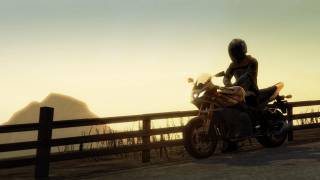
Before we leave Bikes behind, it’s also worth looking at the way the update handles long-term goals and rewards. Most open-world games create their meatier rewards and longer-term goals by locking off certain areas until you’ve completed previous areas. You can look to Legend of Zelda, World of Warcraft, or Borderlands for obvious examples of this. Because Burnout Paradise wants to be a very free and open game, it lets you go anywhere in the city right from the get-go, and because it wants to be an impulsive game with very immediate positive feedback, it’s filled with a lot of short-term rewards as its basis. This lack of a barrier to content in the world is highly liberating, but it also means the game needs to be heavily reliant on another kind of system to convey a sense of long-term progress. That system is the licenses.
Each license indicates a greater level of driving proficiency than the last and requires beating a greater number of events than the last to attain. The game also provides some solid medium-term rewards by giving you new vehicles to hunt down and collect as work your way towards new licenses. Here your rewards and means of progression are clearly defined and can be immediately understood, but that’s not what happens in the Bikes DLC. Burnout Bikes has a license system of sorts, but for starters it’s unclear how to even progress. When you complete an event the update shows a “Learner License” with a percentage on it. It’s natural to think that this percentage represents how much of the DLC’s content you’ve completed. After all, when any other game (including the vanilla Paradise) shows your progress as a percentage, that’s what it’s referring to, but that’s not what Burnout Bikes means.
The percentage shown on your bike license is the percentage of events you’ve completed in the update. Instead of just telling you how many events there are to beat before your next license like the base game does, Bikes starts you at 0% completion and every win gives you roughly 2.631578947% towards your next license. I can’t for the life of me understand why someone would think that’s an intuitive way for a player to think about their progress. You might twig that this is what is happening from fairly early on in the Bikes content, except the game never shows you that percentage updating, so it’s hard to keep a close track of it. Even more confusingly, the Big Surf Island DLC also stamps a percentage on your license, but that one’s not tracking event wins, that one really is displaying how much of that DLC you’ve completed. Whichever one of these licenses you encounter first is likely to incorrectly colour your perception about the other.
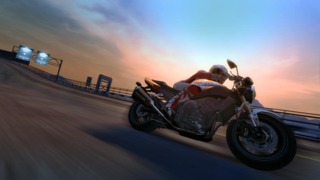
Burnout Bikes also does not have as much of a license progression as it does a license binary. You start with a “Learner Bike License” and don’t get your “Bike License” until you succeed at all 39 Burning Routes. It doesn’t feel like climbing a ladder with rewards at each rung, it’s just one big rung. It’s weird to be eight hours into the content and still be called a “learner” and by the time the game admits you have any proficiency with the bikes, all the main bike content is gone anyway. The medium-term rewards are also basically absent as you don’t get the chance to unlock new vehicles at regular intervals and the unlocks you do get don’t have to be “hunted down”. In this area, as in most others, Burnout Bikes is a victim of the original game’s scale.
Games with large maps and densely packed activities can offer long periods of high quality play, but follow-ups to such games need a lot of resources and man hours spent on them to keep up that scale and enjoyability. The kind of resources and man hours that a company making any DLC, let alone free DLC, is never going to have. This is why most updates in the style of Burnout Bikes layer their own content on top of the existing game content instead of trying to replace it, allowing you to access the two alongside each other, but as we’ve discussed Burnout Bikes cannot do that. The bikes are simply too different from the cars for them to be able to interact with the original content in the same way. The update is a powerful reminder that the protagonist or vehicle you control in a game, and the world that you pilot them around must be intimately built to lock into each other for them to work. Burnout Bikes intelligently changes its world to accommodate for its changed “protagonists” in a way that many DLCs fail to, but those changes dislodge a great number of key parts from the Paradise mechanism that Criterion can’t afford to replace. Thanks for reading.
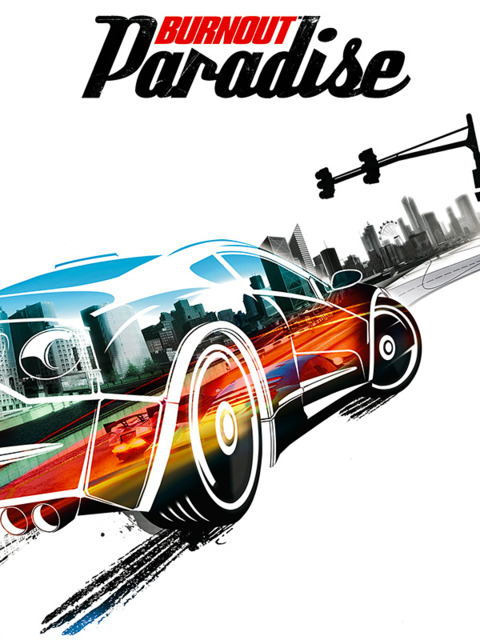
Log in to comment